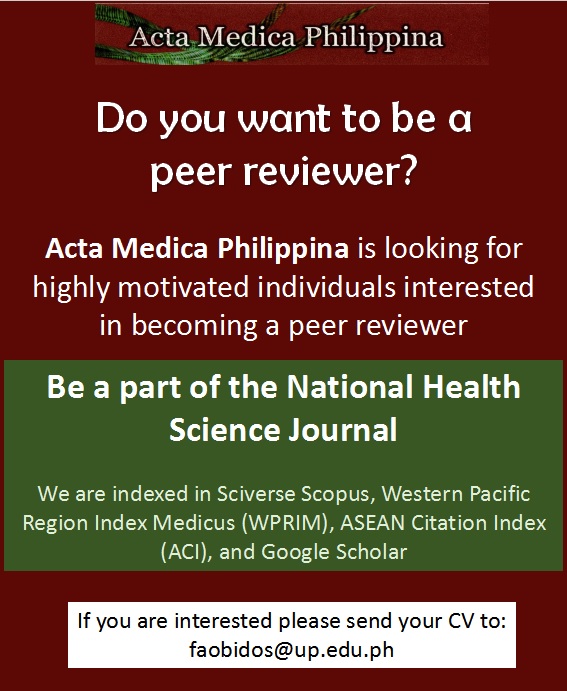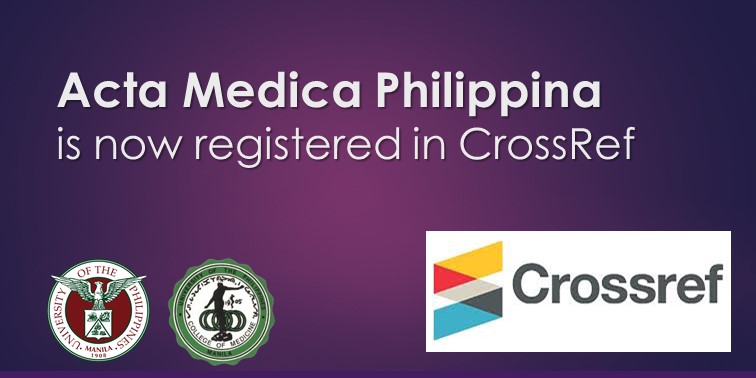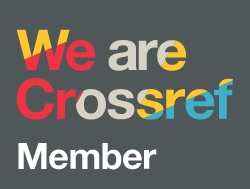Preparing for the Futures of Health Professions Education in the Philippines
DOI:
https://doi.org/10.47895/amp.59i12.13709Abstract
Apart from the COVID-19 pandemic, which unprecedentedly pushed learning from classrooms to digital-based environments, various factors continuously shape the health professions education (HPEd) in the country. For instance, environmental conditions (e.g., high heat indices, flooding, inclement weather situations) have persistently interrupted the course delivery across health disciplines. Manila, where the National Health Sciences Center is located, has also been identified as a sinking megacity. These are crucial reminders for HPEd to utilize disaster-proof strategies (i.e., digital technologies) to promote continuity of learning among future healthcare professionals. Nonetheless, the outcomes of digitally-driven HPEd need to be evaluated to appropriately guide ongoing and future initiatives to build the health workforce capacity. A recent article that assessed the practice preparedness of nurses who graduated from the flexible learning curriculum of the pandemic noted that participants perceived themselves to be well-prepared across various domains (i.e., collaborative relationships, patient-centeredness, self-regulation, clinical judgment and nursing performance, and professional attitudes). However, there are a multitude of factors that need to be considered to establish the effectiveness, efficiency, and suitability of digital methods in preparing the country’s health workforce.
The World Health Organization (WHO) developed a framework detailing four factors for the integration of digital technologies in health workforce development: (1) external, (2) system-level, (3) institutional, and (4) individual. External factors include the populations’ digital and health literacy, culture, and receptiveness, together with the extent of government support to such initiatives. System-level factors involve infrastructure, funding, policy for health workforce development, and multi-stakeholder collaboration. Meanwhile, institutional factors describe organizational capacities in governance, financing, technology deployment, teaching expertise, and faculty development. Individual factors pertain to the attitudes and beliefs among constituents (e.g., administrators, faculty, learners, and support staff) towards digital tools for HPEd. With the utilization of Artificial Intelligence (AI) in various healthcare domains, the WHO also released ethics and governance guidance on the use of large multi-modal models (LMMs). Notably, they acknowledged that generative AI technologies could be used for medical and nursing education, including the provision of simulated patient encounters. Recognizing the potential risks of AI misuse, they further underlined the need for multisectoral engagement in all stages of AI development and deployment, including regulation and oversight.
Due to resource limitations, low- and middle-income countries (LMICs) like the Philippines may experience significant challenges towards a technologically-driven and resilient educational system for the health professions. For instance, digital education may facilitate training of students in remote communities, which may reduce maldistribution of health professionals in underserved settings. However, these are the same areas at the far end of the digital divide, where limited access to information and communication technologies (ICT) put them at further disadvantage. With competing priorities across various sectors, the national budget for digitalization may remain constrained. Hence, support from non-government agencies will be crucial to sustain a collaborative digital ecosystem for health, education, and other related areas. Recently, the Department of Science and Technology (DOST) launched the National AI Strategy for the Philippines (NAIS Ph), which proposed a comprehensive strategy and a whole-of-society approach in the development, deployment, and regulation of AI in the country until 2028. This will have significant impacts in healthcare, education, disaster resilience, and other aspects of national development. Nonetheless, with the change of national leadership in 2028, it is hoped that these initiatives are not hampered by misplaced political priorities.
While higher education institutions and health sciences centers await their engagement in the national agenda towards technological advancement, these organizations are invited to begin their enabling processes towards the transformative HPEd delivery. Curricular reviews, while regularly performed, should be more cognizant of the future towards digitalization. Particularly, determining the equivalency of online activities with face-to-face training across courses is crucial. While not all competencies in clinical disciplines can be fully addressed by digital education, it is vital to establish specific outcomes that can be met through full digital or blended learning strategies. Notably, the literature has underlined blended learning as superior in achieving learning outcomes than either face-to-face or online education alone. While technology is being adapted and improved, continuous development of skills related to AI/digital literacy, self-directed learning, and ethical use of technology among university stakeholders remain relevant.
Research continues to play a key role in the successful integration of digital technologies in HPEd. A systematic review of e-learning interventions for medical education in LMICs found that most studies involved pilot investigations, which employed summative assessments and questionnaire evaluation. With the paucity of evidence in this area, there is a need for high-quality studies with comprehensive outcomes to guide robust recommendations and cost-effective strategies towards adopting technology in HPEd. Further research is also vital to clearly delineate which health discipline components can be implemented digitally, what optimal “hybrid” model of digital and traditional education is feasible, and how program outcomes can be evaluated. Notably, the UP Manila launched the Futures Thinking Initiative, which includes a project that aims to explore the futures of health professions education delivery, seeking to engage various stakeholders in the multi-causal/layered analysis of factors towards a future-proof and resilient education of the Philippine health workforce. The project seeks to support not only the institution, but the whole country in reaching a preferred future where education is uninterrupted and resilient to external events, as well as self-directed and complemented by appropriate teaching-learning methodologies. While the futures of HPEd remain uncertain, strategic foresight and research-based analyses could guide institutions towards the roadmap with optimal outcomes for the health workforce.
Downloads
Published
Issue
Section
License
Copyright (c) 2025 Acta Medica Philippina

This work is licensed under a Creative Commons Attribution-NonCommercial-NoDerivatives 4.0 International License.




.jpg)



